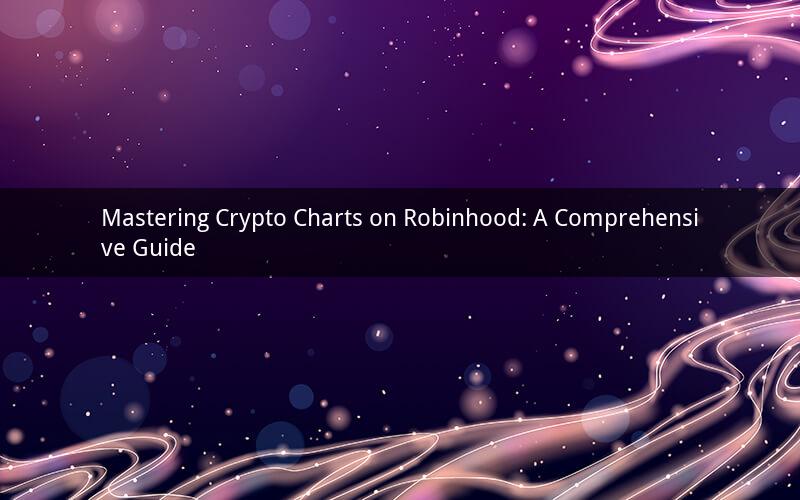
Introduction:
In the fast-paced world of cryptocurrencies, being able to read and interpret charts is a crucial skill for any investor. Robinhood, a popular stock and crypto trading platform, provides users with a variety of tools and resources to analyze the market. This guide will explore how to read crypto charts on Robinhood, providing you with the knowledge to make informed investment decisions.
Section 1: Understanding Crypto Charts
1.1 What are Crypto Charts?
Crypto charts are graphical representations of the price movement of cryptocurrencies over a specific period of time. They help traders visualize the market trends and make predictions about future price movements.
1.2 Types of Crypto Charts
a) Line Charts: Show the closing price of a cryptocurrency over time.
b) Bar Charts: Provide more detailed information about opening, closing, highest, and lowest prices.
c) Candlestick Charts: Similar to bar charts, but provide additional insights into market sentiment.
d) OHLC Charts: Display open, high, low, and close prices, similar to bar charts.
Section 2: Accessing Crypto Charts on Robinhood
2.1 Navigating to the Charts
To access crypto charts on Robinhood, follow these steps:
a) Open the Robinhood app or website.
b) Select the "Search" bar and type the name of the cryptocurrency you're interested in.
c) Once the cryptocurrency appears, tap or click on it to open its profile page.
d) Scroll down to the "Charts" section to view the chart for that specific cryptocurrency.
2.2 Analyzing Charts on Robinhood
Robinhood offers various charting tools to help you analyze the market:
a) Timeframes: Choose different timeframes (1-minute, 5-minute, 15-minute, 30-minute, 1-hour, 4-hour, 1-day, 1-week, 1-month) to view the price movement over different periods.
b) Indicators: Apply technical indicators like moving averages, RSI, MACD, and Bollinger Bands to analyze the market.
c) Drawing Tools: Use drawing tools such as trend lines, Fibonacci retracement levels, and horizontal lines to identify potential support and resistance levels.
Section 3: Reading Crypto Charts
3.1 Identifying Trends
To determine the overall trend of a cryptocurrency, look for patterns on the chart. Here are some common trends:
a) Uptrend: Characterized by higher highs and higher lows.
b) Downtrend: Characterized by lower highs and lower lows.
c) Sideways/Consolidation: Characterized by no clear trend, with prices moving within a range.
3.2 Identifying Support and Resistance
Support and resistance levels are critical price points where a cryptocurrency's price may face buying or selling pressure. To identify these levels:
a) Look for previous swing highs and lows as potential resistance and support levels.
b) Use Fibonacci retracement levels to identify potential support and resistance areas.
c) Observe where the price repeatedly reverses direction.
3.3 Analyzing Market Sentiment
Market sentiment plays a significant role in price movements. To gauge market sentiment:
a) Observe the overall trend of the chart.
b) Look for indicators of excessive buying or selling pressure, such as extremely high RSI or MACD readings.
c) Pay attention to news and events that may impact the cryptocurrency's price.
Section 4: Implementing Strategies
4.1 Entry and Exit Points
To make informed trading decisions, identify the following:
a) Entry Point: The price level where you plan to buy the cryptocurrency.
b) Exit Point: The price level where you plan to sell the cryptocurrency.
4.2 Stop Loss and Take Profit
Set stop loss and take profit levels to protect your investments:
a) Stop Loss: A price level at which you want to exit the trade if the price moves against you.
b) Take Profit: A price level at which you want to exit the trade if the price moves in your favor.
Section 5: Frequently Asked Questions (FAQs)
Question 1: What is the best time frame for analyzing crypto charts on Robinhood?
Answer: The best time frame depends on your trading style. Short-term traders may prefer 1-minute or 5-minute charts, while long-term investors might prefer 1-day or 1-week charts.
Question 2: How can I identify a strong support or resistance level on a crypto chart?
Answer: Strong support and resistance levels are typically marked by multiple touches and can be identified using previous swing highs and lows, Fibonacci retracement levels, and horizontal lines.
Question 3: What is the significance of the RSI indicator in crypto charts?
Answer: The RSI (Relative Strength Index) is a momentum oscillator that measures the speed and change of price movements. It ranges from 0 to 100 and can indicate overbought or oversold conditions in the market.
Question 4: How can I use Fibonacci retracement levels to identify potential support and resistance areas?
Answer: To use Fibonacci retracement levels, draw a Fibonacci retracement tool from a recent high to a recent low on the chart. The resulting levels will indicate potential support and resistance areas.
Question 5: What is the importance of market sentiment in crypto trading?
Answer: Market sentiment can significantly impact the price of a cryptocurrency. By understanding market sentiment, you can identify potential buying or selling opportunities and make more informed trading decisions.